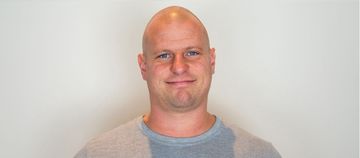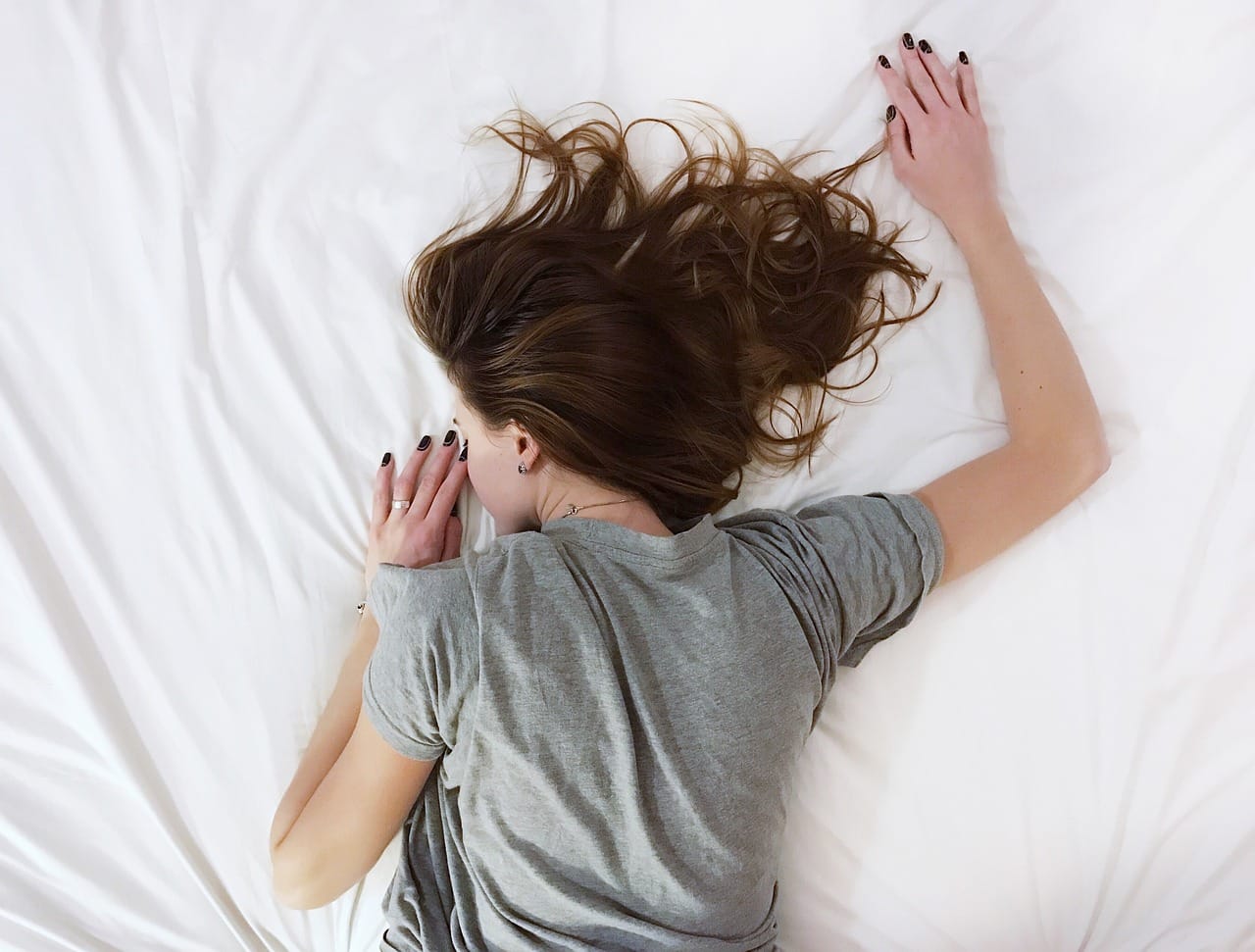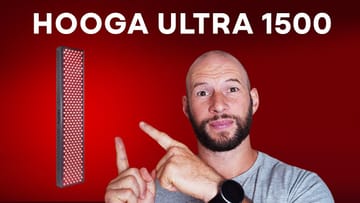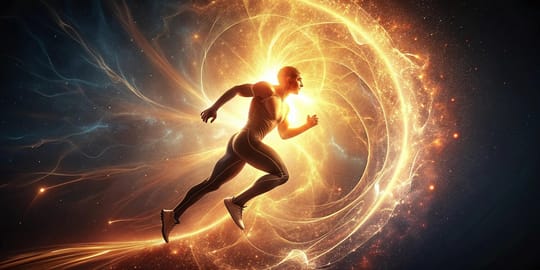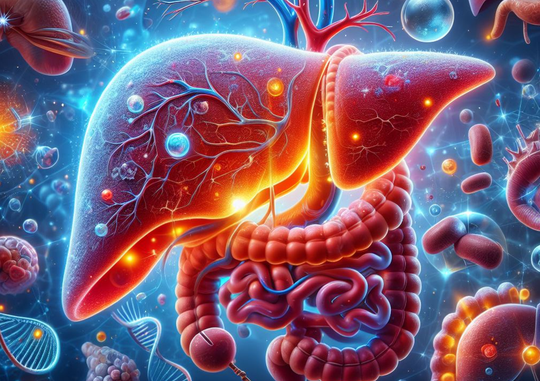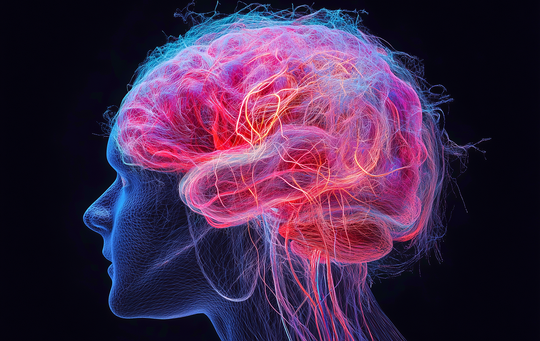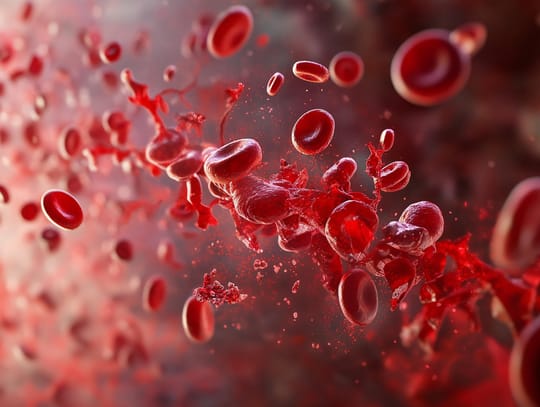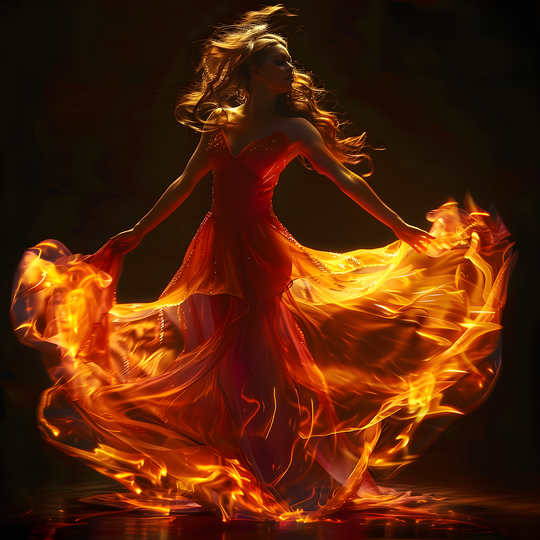In this blog post, I'll talk about light therapy for insomnia. If you've got insomnia light therapy can be extremely helpful but it matters a lot what specific form of light therapy is applied.
I'll talk about different light therapy for sleep options, such as red light therapy for sleep and light box therapy for sleep. Also, the most potent form of light therapy - sunlight - is also discussed. I'll venture into different sleep disorders during this process.
If you're interested in this topic, I also refer to my Red Light Therapy For Sleep: The Science of Sweet Dreams blog post - that blog talks about red light therapy for sleep in general.
How Light Therapy Makes You Sleep Better
So how does light therapy work? Well, let's talk about the "circadian rhythm" and "circadian light therapy" (1; 2; 3; 4; 5; 6; 7; 8; 9).
What Is The Circadian Rhythm?
The circadian rhythm is the more or less 24-7 biological clock inside your body. Your body has one main clock in a brain area called the "suprachiasmatic nucleus" and then trillions of other peripheral clocks in each of your cells. That central clock in the suprachiasmatic nucleus keeps track of time and is the "executive" for the rest of the clocks.
The peripheral clocks follow the main clock. And, just like there's ebb and flow in the ocean, your body's clocks mainly respond to light and darkness (although other factors play a role too).
During the daytime, when light enters your eye, it signals your body to wake up. During the nighttime, the absence of light tells your body it's time to go to sleep. In darkness, melatonin levels begin to rise.
Why Does The Circadian Rhythm Matter?
When you disrupt that circadian rhythm, disease is often the result - at least in the long run. The risk of many different diseases increases with circadian disruptions, such as cancer, chronic pain, heart disease, diabetes, neurodegenerative diseases, and more.
The way to avoid these problem is to have a proper day and night cycle. That proper "day and night cycle" means that you'll have ample of bright light exposure during the day, and darkness at night.
Why does the circadian rhythm have such a dramatic impact on many biological processes within the human body? Simple: all the peripheral clocks try to mimic the main clock in your head. And, that main clock in your head has evolved through millions (and even billions) of years to follow a 24-hour day and night cycle.
The Circadian Rhythm, Light, And Your Ancestors
For your ancestors, following a proper day and night cycle wasn't a problem. After sunset, these ancestors only had access to moonlight and campfire. And, campfires are mostly made up of red and near-infrared light - both of these don't really impact the circadian rhythm through the eye.
It's mainly the blue and the green colors that tell your brain that it's time to wake up, after they enter your eye. Ultraviolet light also has an impact on your brain through the eye, but the mechanism is different (10; 11; 12; 13; 14).
Ultraviolet light can help create serotonin and dopamine in your brain, which are brain-signalling compounds. Serotonin makes you feel all is well and dopamine increases motivation and drive paired with pleasure.
So you cannot avoid the influence of the circadian rhythm. This topic is extremely important before I start talking about insomnia and other sleep disorders.
One research group writes the following about this topic:
"Our physiology and behavior are shaped by the Earth’s rotation around its axis. This biological circadian system has evolved to help humans adapt to changes in our environment and anticipate changes in radiation, temperature, and food availability. Without this endogenous circadian clock, Homo sapiens would not be able to optimize energy expenditure and the internal physiology of the body." (1)
So, you cannot choose to not have the circadian rhythm affect you. It's similar to the fact that you cannot choose to drink water or eat food.
There's No Avoiding The Influence Of Light On Sleep
The effect of ignoring an optimal circadian rhythm - by avoiding the light in your environment - just accumulate slower. But the damage will still be done.
So, returning to the original question of this section: "How does light affect sleep?" Light is extremely primordial in relation to sleep. Without darkness at night, your body won't create melatonin like it should and sleep quality suffers.
And, without bright light in the morning, the same thing happens: sleep quality suffers too.
The circadian rhythm - under the influence of light and other factors - affects your biology in many different ways. For instance, which genes are activated or not ("expressed") is influenced by your circadian rhythm. Hormones and temperature are affected too, as well as glucose processes in your blood and your heart rate. So tons of different circadian rhythm mechanisms exist.
Where It All Went Wrong With Light's Effect On Sleep
So where did it all go wrong? One science article writes the following about this topic:
"The circadian timing system or circadian clock plays a crucial role in many biological processes, but the increase in activities that operate 24/7 and the common usage of television, internet, and mobile phones almost 24 h a day leads to a gradual decrease in the adequate sleeping time." (4)
I'll add artificial light and light from outside the house to that list. Each time you're exposed to that light (mainly blue and green light) at nighttime, your sleep suffers. Many people use their cell phone and television right until the moment they're about to go to bed.
These people therefore miss the darkness that's necessary for falling asleep quickly, staying asleep, and getting more deep sleep. Melatonin has been called the "new vitamin D" because of its all-encompassing importance (15; 16; 17; 18; 19; 20).
Shift work is an example of a sleep disorder where that light pattern is disrupted. Shift work also leads to extremely poor health outcomes in general, such as increased cancer risk, heart disease, obesity, diabetes, mental health problems, and a whole host of other diseases (21; 22; 23; 24; 25).
Melatonin, Light, And Sleep Disorders
But back to melatonin...
Melatonin is the hormone of darkness. Vitamin D the hormone of the sun. For that reason, many consider melatonin the "next vitamin D". And while supplements are considered safe in mainstream science, your best bet is still the natural solution: more darkness at night.
(You can grab some stylish blue light blocking glasses at Swanwick Sleep, for instance, and save with code FERGUS)
Blue light blocking glasses prevent blue and green light from entering your eye, thereby improving melatonin secretion at night. Or you could get some red light bulbs for sleep and use them throughout the house.
The Effectiveness Of Light Therapy On Insomnia
Many people ask: "Getting good light exposure in the hours after waking performs what function?" When light enters your eye in the morning, it tells your body it's daytime.
At 4AM at night or so (which differs for each person), cortisol levels begin to rise. Sunlight is the natural impulse for the body to get that cortisol level back down and to increase the production of other hormones.
The Effectiveness Of Sunlight On Insomnia
So it turns out there are quite a few studies of sunlight's effect on insomnia (26; 27; 28; 29; 30). The first study I quote states that:
"Our findings suggest that low daytime light exposure is an important environmental risk factor for mood, sleep, and circadian-related outcomes." (26)
The less time you spend outdoors, the greater the problems become. Also, please keep in mind that sunlight is a mix between ultraviolet, visible (violet, blue, green, yellow, orange, and red), and different types of infrared.
You cannot get these benefits from a light box - which only emits visible light. Right now, there's no replacement for sunlight exposure. Tanning beds aren't a good replacement either, as they emit mainly ultraviolet light (which can help create vitamin D) but not the other light types.
Overall happiness and sleep is much better for people who spend some time outside each day. Fatigue is lower, insomnia risk goes down, as well as depression risk and neuroticism.
People who generally don't get sunlight exposure can get improvements in about four weeks, according to studies (27). My biggest problem with people such as Bryan Johnson who uses light boxes and red light therapy is that they totally seem to avoid the effects of sunlight - the pictures basically tell that story.
The Effectiveness Of Red Light Therapy On Insomnia
Next up, there's red light therapy. Four studies have been published on the topic of red light therapy for insomnia and sleep in total (31; 32; 33; 34). All four studies have very positive outcomes.
Outcomes range from better melatonin levels in the brain after using a red light therapy bed, to actually needing less sleep. Anecdotally, most users of red light therapy will agree with this assessment.
If you're interested about this topic, check Alex Fergus' video on red light therapy and sleep here:
What Sleep Disorders Can Be Addressed by Light Therapy?
Dozens of different sleep disorders exist (35; 36; 37; 38; 39). These sleep disorders can be categorized into, among others, sleep-disordered breathing, circadian rhythm sleep-wake disorders, insomnia, movement disorders during sleep, and more.
Generally, the risk of sleep disorders goes up as you get older. But, sleep disorders also exist for children already, although rare. Children also have different symptoms than adults. I always recommend consulting your physician if you or your child has a sleep disorder, and never only relying on this article.
Also, light therapy is just one intervention for sleep disorders. But many different therapies exist, depending on the sleep disorder. Additionally, light therapy will not work for all sleep disorders. For insomnia and circadian disruptions, light therapy works really well. For other sleep disorders, not necessarily.
I've explored insomnia before in this blog post. Now let's move on to some other conditions:
Circadian Rhythm Sleep-Wake Disorders
Circadian rhythm sleep-wake disorders is the easiest of the bunch, because it's literally a circadian rhythm problem (40; 41; 42; 43; 44). Not all studies agree here that light therapy is the answer but most do. Other strategies may work as well, such as sleep education (about healthy bedtimes and more), melatonin, and prescription drugs.
Although no studies exist on the topic of red light therapy and sunlight for the sleep disorder, I recommend trying it anyway because these two therapies improve health across the board, including sleep. You've got very little to lose trying sunlight for a month, for instance.
Sleep Apnea
Sleep apnea is complex. I'm the last person to argue that light therapy or circadian disruptions are the sole fix and cause of sleep apnea. Nevertheless, a few studies show that improvements can be made by fixing the circadian rhythm and integrating light therapy into your life (45; 46; 47; 48; 49).
With sleep apnea, breathing stops during sleep. The condition can be extremely dangerous and at the very least makes people feel wiped out because sleep quality goes down big time if you're not breathing.
Nevertheless, fixing your circadian rhythm and getting morning sunlight may aid your condition big time.
Delayed Sleep Phase Disorder
Delayed sleep phase disorder is another circadian disruption, whereby people cannot maintain a proper circadian rhythm. You may therefore sleep at inappropriate times, for instance.
A few studies, here, show improvements in delayed sleep phase disorder with bright light (50; 51; 52). Another study shows that wearing blue light blocking glasses also works (53).
Shift Work Sleep Disorder
I've touched upon shift work before in this blog. There is no easy solution here! I'm very well aware that many people would immediately shift to a normal rhythm if that were possible for them.
Instead, my recommendation here is to look for options to avoid shift work or night work over time. The reason is that you cannot avoid the problems created by shift or night work.
No matter what diet or exercise regimen or supplement protocol, shift work damages you over time. It's best to see it as smoking - or perhaps smoking squared. If I could choose between smoking a pack of cigarettes per day and the biological effects of night shifts, I'd choose the pack of cigarettes in a heartbeat. I hope that gives you an indication of the risk I allocate towards working at night.
Next up, let's discuss how to implement different types of light for sleep disorders:
Red Light vs Blue Light vs Natural Light
So, red light vs blue light vs natural light (sunlight), which is best? Here are a few guidelines:
- Sunlight is always best and currently irreplaceable by any technology. Sunlight is better than a light box. But if you use light boxes for sleep disorders, that's better than doing nothing. Good sunlight is not always available across all locations of this planet - especially if you're living in the Northern Hemisphere. So if you're living in Canada or Norway and don't have any good sunlight access, use a light box.
- Blue light therapy is nice but you only need it if you're not getting any sunlight. Here's a good video on blue light therapy. You may also want to read about red light vs blue light therapy, benefits and differences. Most people will get blue light from the sun or from a light box, so there's no need to worry about it further. And, you're usually getting an overload of blue light exposure anyway, if you're working indoors under fluorescent lighting or LEDs.
- Red light therapy helps most people's health, often even if they're already getting sunlight exposure. Likely, one mechanism here is that red light therapy emits light at very specific wavelengths. These wavelengths have healing properties, which then improve health in turn. If you're interested in this topic, read more about how to use red light therapy. And if you're a beginner, check my blog about what is red light therapy. Also, if you want a bigger red light therapy panel, check out the red light therapy comparison blog post by Alex Fergus - these wall panels can treat your entire body in a short amount of time!
- For the nigthtime, either after sunset or a few hours before bedtime, I recommend everyone wear blue light-blocking glasses. That sounds extreme but it's the only way in modern society by which you can still let your melatonin levels rise. Billboards, street lighting, car lights, are all around you and I, and it's impossible to avoid that impulse on the brain that it's daytime. Remember that when blue and green light enter your eyes, they tell your brain it's daytime, even though it's not. As a result, your body suppresses melatonin. For some stylish blue light-blocking glasses, I recommend Swanwick Sleep - you can use code FERGUS to save.
- At first, follow the instructions for any device you may buy. Over time, apply some trial and error and notice what you feel. Do you feel better with half the treatment time or double that? Everybody's biology is slightly different, so I can't give you advice such as "use device X for Y amount of time" because that recommendation wouldn't be optimal for everybody.
Is Light Therapy Ideal For Everyone?
Light therapy is ideal for everyone. But, not everyone benefits equally. Some people are more sensitive to light than others. And, some people are sensitive to light categorically, so they'll have to take things very slow.
In the case of sleep disorders, consult your physician about using light therapy first. After your physician gives the green light, you can start light therapy according to the suggestions I made above.
Best Red Light Therapy Devices For Insomnia
I'll keep it really simple here. First up, if you want red light therapy, I recommend watching the following videos - first budget red light therapy panels for treating small bodily areas:
The panels above are smaller tabletop panels. For bigger options, check the wall panels that are compared below:
And, finally, if you want a panel that has a large chunk of blue light emitted, consider the LightpathLED Blue Combo panel version of the Diesel range:
Alex doesn't review the Blue Combo version above, but it's basically the same as the regular LightpathLED Diesel but with more blue light emitted and less red and near-infrared light.
You can grab a LightpathLED Blue Combo if you wish - discount code ALEX saves!
Conclusion: For Insomnia, Light Therapy Is Amazing
Light therapy for insomnia relief and sleep disorders is highly promising. We've got many people in our Facebook group who notice much better sleep after they've started their red light therapy routine.
For the best results, it's probably smart to combine red light therapy with visible light, such as either an SAD lamp in the morning or, preferably, sunlight exposure.
Frequently Asked Questions
Below I've considered a few frequently asked questions regarding light therapy for insomnia and sleep disorders:
Should I Use Red Light Therapy Before Bed?
Generally, you can use red light therapy before bed. Some people will do poorly with this solution, however, so these people may need to use red light therapy in the morning, afternoon, or early evening. Some people do poorly with red light therapy before bed because it's overstimulating for them.
What Does Circadian Light Therapy Mean?
Circadian light therapy entails using mostly green and blue light to tell your body it's daytime. When green and blue light enter your eyes, they tell your body it's daytime.
Almost all processes in the body are tied to your "circadian rhythm". The circadian rhythm is the 24+ hour day and night cycle in your body. The blue and green light tells the central clock in your brain that it's daytime. The peripheral clocks in most if not all your cells follow that central clock.
Can I Use A Sad Lamp At Night? Why, Why Not?
Using an SAD lamp at night isn't smart because you'll tell your body it's daytime when it's nighttime instead. So, you're creating a circadian disruption. That circadian disruption is similar to what happens when you're working a nightshift, or when you're travelling and getting jetlagged.
Jet lags and night shift work have enormous negative health consequences and should be avoided at all costs. The same is true for bright light exposure at night.
Should I Use Red Light During Sleep Night?
You can use a small bedroom red light at night to be able to see your environment. We don't recommend using a red light therapy product close to the skin at sleep, however, because you won't control the dose very well. For instance, you can't turn around for optimal treatment, and will probably overdose some areas big time when you're exposing yourself for 6-9 hours at night!
Items Mentioned
- Swanwick Sleep Blue Blocking Glasses - code FERGUS saves
- LightpathLED Blue Combo - code ALEX saves
- Red Light Bulbs For The Bedroom Or Living Room
- Light Box (SAD Lamp)
This is a post by Bart Wolbers. Bart finished degrees in Physical Therapy (B), Philosophy (BA and MA), Philosophy of Science and Technology (MS - with distinction), and Clinical Health Science (MS), has had training in functional medicine, and is currently chief science writer at Lighttherapyinsiders.com
Found This Interesting? Then You Might Like:
- Start Here - Light Therapy 101 & Buyers Guide
- Discount Codes, Deals & Recommendations - Red Light Therapy
- What Is Red Light Therapy?
- Red Light Therapy For Sleep: The Science of Sweet Dreams
- How To Use Red Light Therapy 101: The Best Guide For Starters
- Red Light Therapy For Upgrading Your Brain Health
- Best Red Light Therapy Panel 2024: EPIC Comparison
